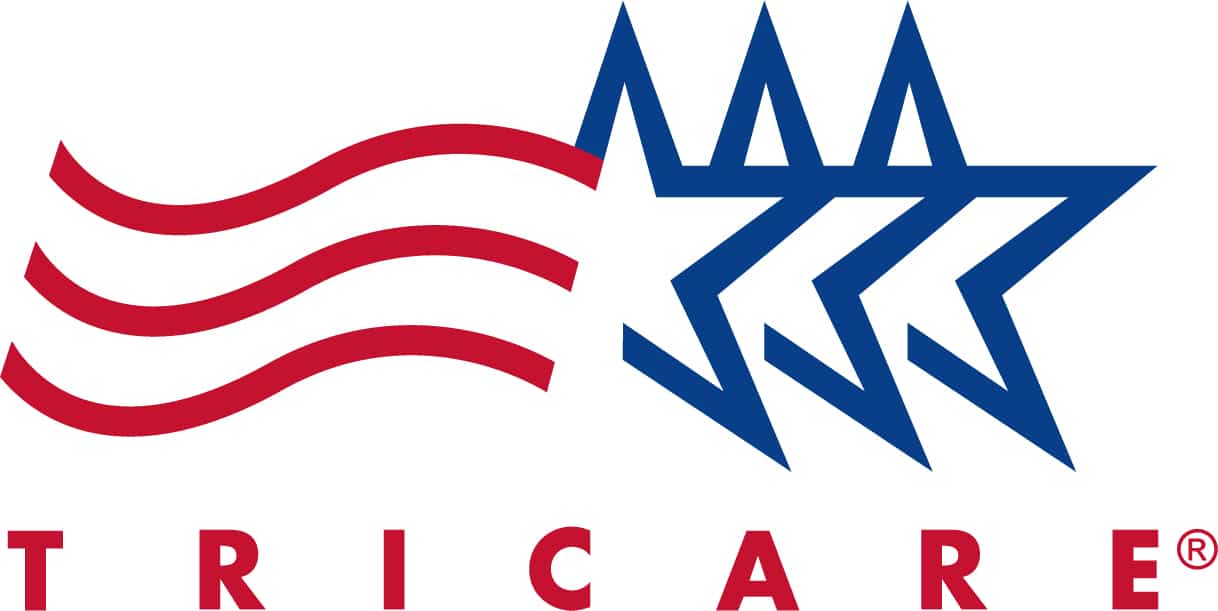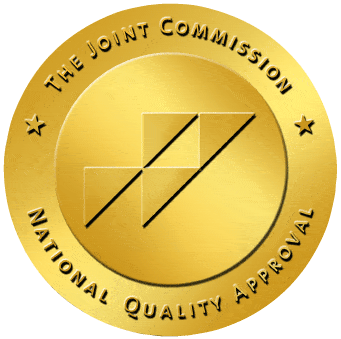Withdrawal Timelines for The Top 10 Addictions

Withdrawal Timelines for The Top 10 Addictions
Table of Contents
Introduction
Learn about the withdrawal timelines for the ten most commonly abused substances that lead people to seek out help in recovering from addiction. More than 20 million Americans aged 12 and over suffer from a substance use disorder.1
The 10 Most Common Addictive Substances
These are the 10 most common substances that typically need a detox period before treatment can begin:
- Alcohol
- Barbiturates
- Benzodiazepines
- Cocaine
- Heroin
- Inhalants
- Marijuana
- Nicotine
- Opioids
- Stimulants
Americans Suffering From Substance Use Disorders
According to the 2018 National Survey on Drug Use and Health, more than 65.6% of Americans over the age of 12 have used, abused, or misused the top 10 addictive substances. More than 58% of that figure is due to nicotine or alcohol use. Many people aged 12 and over have become victims of addiction to these various substances in that year.2
At least 14.8 million people report having an alcohol use disorder
4.4 million are dependent on marijuana use
977,000 people suffer from cocaine use disorder
About 526,000 persons have a heroin addiction
An estimated 561,000 abused stimulants
751,000 people used barbiturates
2 million people had an addiction to opioids
An estimated 47 million people continue to use nicotine products
About 576,000 people misused inhalants
5.4 million misused prescription benzodiazepines
Addiction Recovery Often Includes Detox
A person who is recovering from a substance use disorder may have withdrawal symptoms when stopping the use of drugs or alcohol. It’s very helpful to know what to expect before undergoing the detox process.
When there is knowledge ahead of time to which symptoms to expect, how long withdrawal will take, and how the process will work, the person is likely to feel much less anxious about this important step towards recovery.
Alcohol Withdrawal Timelines
When someone with an alcohol use disorder stops drinking, they may very well experience withdrawal symptoms. Various symptoms will occur within a number of hours after a person has had their last drink.
According to a New England Journal of Medicine article, about 50% of people with an alcohol use disorder suffer some symptoms of withdrawal when they stop drinking.3
The first signs of alcohol withdrawal will begin about 6 hours after having the last drink.
The symptoms will usually be mild but noticeable at this time. Someone who’s been a heavy drinker for many years, though, may have a seizure after just 6 hours of having the last alcoholic drink.
After 6 hours without a drink, symptoms may include:
Feelings of anxiety
Trembling hands and legs
Headache
Nausea
Sleeplessness
Night sweats
Within 12-24 hours without a drink:
The person may experience the above symptoms as well as:
Hallucinations
Seizures
Within 24-48 hours after alcohol withdrawal:
The person may continue to have minor withdrawal symptoms like headaches, shaking, and stomach upset.
48 to 72 hours after withdrawal:
Some people experience alcohol withdrawal delirium, also known as delirium tremens (the DTs). This can cause one or more of the following:
Increased heart rate
Seizures
Raised body temperature
Paranoia
Illusions
After 72 hours of having the last drink of alcohol:
Symptoms of the DTs may peak and be at their worst.
Overcoming Alcohol Use Disorder (AUD)
There are many ways to treat AUD to stop drinking. There are treatment centers offering medications and behavioral therapies to help with withdrawal symptoms and lead to long-lasting recovery.
Types of alcohol treatment centers usually include four levels of care:
- Outpatient office visits for counseling and medication
- Intensive Outpatient or Partial Hospitalization for more serious needs
- Residential treatment programs in a 24-hour setting
- Intensive Inpatient services to medically manage withdrawal and other services in a 24-hour setting4
Barbiturate Withdrawal Timelines
Barbiturates are in a group of drugs known as sedative-hypnotics.5 This type of drug is thought of as a brain relaxer, but it is different from alcohol, which causes relaxation but is classified as a depressant. Taking barbiturates in combination with alcohol can be life-threatening.
Barbiturates are addictive, and they can cause dangerous, even fatal, withdrawal symptoms. They can be taken in pill form or injected into muscles.
Examples of barbiturates include:
Ambobarbital
Pentobarbital
Phenobarbital
Secobarbital
Tuinal
These are often referred to by their street names:
Downers, Blue Heavens
Nembies, Yellow Jackets
Purple Hearts, Goof Balls
Reds, Lilly
Rainbows, Reds and Blues
Some barbiturates have a very short speed of action, lasting just a few minutes, while others are somewhat longer acting, staying in the body’s system for about two days. Because of its short half-life, symptoms of withdrawal from barbiturates usually show up within a day or less.
Within 24-72 hours after a last dose of barbiturates:
Symptoms may include:
Changes in heart rate
Nausea
Vomiting
After 4-7 days:
Sleeplessness
Irritability
Mood changes
Psychosis (in severe cases)
If withdrawal symptoms continue throughout the second or third week or longer, that becomes a condition known as Protracted Withdrawal Symptoms or PAWS. These symptoms can sometimes last for up to a year or longer:
- Anxiety
- Depression
- Panic attacks
- Distorted thinking
- Loss of coordination when stressed
Benzodiazepine Withdrawal Timelines
Benzodiazepines are tranquilizers that include the drugs Ativan, Xanax, Klonopin, and Valium. Some are long-acting and others have a short half-life. They can become physically addictive and, when stopped, withdrawal side effects often occur.
According to Dr. Harris Stratyner, vice chairman of the National Council on Alcoholism and Drug Dependence, benzodiazepines are one of the most dangerous drugs from which to withdrawal.6
Early withdrawal symptoms can include:
Anxiety
Muscle spasms
Restlessness
Insomnia
Headache
Nausea
Weight loss
Irritability
Sweating
Confusion
Trouble concentrating
Depression
Agitation
Feeling tense and stressed
Acute benzodiazepine withdrawal symptoms for people who have become very dependent on these substances include:
Seizures
Sensitivity to light, noises, and touch
Feeling numb in the arms and legs
Feeling as though things are not real
Suicidal thoughts
Hallucinations
Disturbed thoughts
These symptoms can last for a few days or a week.
Sometimes, post-acute withdrawal syndrome can set in, even after physical dependence has ended. A person will have trouble sleeping, feel tired a lot of the time, and have cravings for the drug.
Death from benzodiazepine withdrawal can occur in severe cases, especially if alcohol use disorder is also an issue, or if someone stops using benzodiazepines cold turkey without professional help.
Cocaine Withdrawal Timelines
When a cocaine user stops taking this drug, a “crash” can be felt very quickly. During this crash phase of withdrawal, a person has strong cravings for the drug.
Within hours or a few days of crashing:
These withdrawal symptoms can last a week to 10 days or more. They are mainly psychological rather than physical and can include:
Fatigue
Sleepiness
Tiredness
Unable to feel pleasure in things
Anxiety
Irritability
Agitation
Paranoia
More About Stimulants
10 weeks:
The withdrawal phase can last up to 10 weeks and cause the following symptoms:
Cravings
Depression
Appetite changes
Feelings of uneasiness
Sleep disturbances
Feeling lazy and tired
6 months after withdrawal:
When the withdrawal process is complete, there is an extinction phase that can occur up to six months later. During this stage of cocaine withdrawal, cravings begin to lessen but will return when triggers appear.
Cocaine Headache
Some people who suffer from an addiction to cocaine can also experience severe headaches that are similar to migraines.
Heroin Withdrawal Timelines
Someone who has developed an addiction to heroin will have withdrawal symptoms once they stop using this illegal substance. They will experience physical and psychological side effects.
Within 6-12 hours:
The most common symptoms will include:
Sleeplessness
Nervousness
Diarrhea
Dilated pupils
Feeling anxious
Muscular aches
Shaking
Panic attacks
After 1-5 days:
These withdrawal symptoms will worsen over the next days, peaking on the third day after the last heroin dose and will also likely include:
Stomach cramps
Sweating
Chills
Nausea and vomiting
6th or 7th day:
This acute withdrawal period will ease up symptoms. Muscle aches and nausea will lessen, but most people will still feel worn out and tired.
For months after acute withdrawal from heroin, PAWS might continue to cause anxiety, depression, sleeplessness, fatigue, and irritability.
Heroin withdrawal can be very physically dangerous and possibly fatal when not performed under medical supervision.
Inhalant Withdrawal Timelines
Inhalants are regular household items that are inhaled and absorbed in the respiratory tract to achieve a high. These substances, when abused in this way, are central nervous system depressants that can become addictive and are dangerous to your health.
The most commonly abused inhalants are found in the following everyday household objects:
Marker pens
Different types of glue
Paint thinner
Nail polish remover
Spray paints
Propane gas
Lighter fluid
Gasoline
Cleaning fluids
Compressed air cleaning products
Room air fresheners
Whipped cream and other aerosol containers
Leather cleaners
Inhalants can be sniffed or snorted from a container, “huffed” by soaking a rag with the product, placing the cloth over the face and inhaling it, or “bagged” by putting the substance in a bag that is placed over the head and then breathing in the vapors.
People have been using inhalants for various reasons over the centuries. The ancient Greeks believed that inhaled vapors allowed them to communicate with their gods, possibly due to the substances’ trance-like effects.
People in the 19th century inhaled vapors for recreational purposes, with nitrous oxide being a popular alternative to drinking alcohol.
It turns out, though, that inhalants are quite dangerous and can cause a rapid psychological addiction. Withdrawing from these substances, especially without medical supervision, can cause life-threatening symptoms that are both physically and psychologically damaging.
Days 1-2:
After 24-48 hours of stopping inhalant use, some of the following physical withdrawal symptoms may appear:
Hand tremors
Sweating
Vomiting
Seizures, in severe instances
Some psychological symptoms can include:
Anxiety
Cravings for the substance
Sleeplessness
Irritability
Hallucinations, in severe cases
Days 3-7:
After the next few days, the physical withdrawal symptoms will lessen. The psychological effects can continue to be troubling, though, especially:
Depression
Anxiety
Sleeplessness
Days 8 and up:
Nearly all of the above inhalant withdrawal symptoms will fade and eventually go away completely over the course of the next 4-8 weeks.
Post-Acute Withdrawal Symptoms:
Some people who have gone through inhalant withdrawal, however, may continue to experience psychological symptoms for months afterward. This period can last anywhere from 18-24 months.
Marijuana Withdrawal Timelines
Marijuana contains a substance known as THC, which produces a “high” and affects both the brain and the body. The THC in marijuana can become physically addictive, especially when used daily over a period of several months. If this is the case, when abuse of the substance stops, you may experience withdrawal symptoms, and symptoms may be different for everyone.
1 to 2 weeks after stopping marijuana use:
Symptoms can include:
Irritability
Sleeplessness
Depression
Appetite loss
Aches
Sweating
Fever
Nausea
Stomach pain
Headaches
Chills
Tremors
Anxiety
Withdrawal symptoms of sleep disturbances can continue for 2-4 weeks afterward.
Easing Early Withdrawal Symptoms
- If you use marijuana on a daily basis, begin reducing your intake gradually rather than suddenly
- Eat a healthy diet
- Drink lots of water
- Stay away from caffeine
- Get plenty of sleep
- Exercise daily
- Reach out for motivation and support from friends and family
Tips On How To Stop Smoking Weed
Withdrawing from marijuana is more of a psychological issue than a physical one. Having the right mental attitude can go a long way toward steering you in the right direction to improve your health and have a successful detox experience.
- Clear out any supply of marijuana you may still have. Just throw it away, so you aren’t tempted to use it.
- Stay away from people and places that make smoking a temptation or trigger cravings
- Exercise every day to reduce stress, cravings, and to increase brain health
- Plan and take part in sober activities that don’t include recreational drugs
- Find a support system made up of friends and family who can help you through your weak moments
- Set some goals for things you want to accomplish in life
- Seek outside professional help at a rehab center if quitting becomes too difficult to handle
Nicotine Withdrawal Timelines
Nicotine, found in tobacco, is a highly addictive stimulant drug. It’s one of the most common drugs of abuse, whether it’s used in cigarette, cigar, chewing tobacco, or e-cigarette (vaping) form. This stimulant drug speeds up the signals that travel between the brain and the body.
Withdrawing from nicotine use after a long period of use is very difficult because the addiction is a physical one. Some withdrawal symptoms can appear just 30 minutes to 2 hours after your last smoke or vaping session.
Within 4 hours of the last intake of nicotine:
Cravings for the drug will begin.
After 10 hours of withdrawal:
It’s common to feel:
Restless
Have trouble sleeping
Within 24 hours of quitting nicotine:
The person may:
Feel very irritable and in a bad temper
Feel angry for no reason
Wake up in a bad mood
Two days post-withdrawal:
Have difficulty concentrating on tasks
You may begin to have headaches
60 hours after the last nicotine dose:
It’s common to experience:
Cough
Increased appetite
Increased feelings of stress
Anxiety
3 days after withdrawal:
Cravings for nicotine decrease
Relapse, when in the company of smokers, is a threat
Dizziness
Constipation
Stomach pain
Fatigue
3 days post withdrawal:
Most nicotine withdrawal symptoms will be at their worst. After one week, the most uncomfortable effects will disappear.
1 week after quitting nicotine intake:
Nearly all withdrawal symptoms are gone, though some may linger. For the next 2-4 weeks, you may still experience:
Low energy levels
Mental fogginess
Increased appetite
Stomach upset
Mucus-producing cough
Opioid Painkiller Withdrawal Timelines
When quitting opioid drugs, there is a detox period during which time the toxins leave the system. This detox period should be done under medical supervision, as the withdrawal effects can be physically and psychologically harmful.
The severity of opioid withdrawal symptoms can depend upon how long the addiction has lasted, how suddenly drug use is stopped, and the dosage that’s been used during that length of time.
Opiates stay in the system for up to 2 days after the last dose but can be seen in urine samples for a few days afterward.
Some of the most common opioid withdrawal symptoms can be expected to stick to the following timelines:
6-30 hours after last dose of an opioid:
This early withdrawal period may cause:
Muscular aches and pains
Runny nose
Sleep issues
Extreme yawning
Anxiety
Increased pulse/heart rate
Sweating
Fever
Increased blood pressure
72 hours-7 days after last opioid dose:
This late withdrawal period may cause:
Diarrhea
Nausea
Vomiting
Cravings for the drug
Stomach pain
Depression
After 1 -2 weeks:
Some people experience post-acute withdrawal symptoms (PAWS) that may last longer than a week:
Psychological symptoms like depression and anxiety
Cravings
Severe vomiting and diarrhea during the late withdrawal period can become life-threatening, making medical treatment a very important part of opioid detox.
Stimulant Withdrawal Timelines
Some commonly abused stimulants include prescription drugs (Adderall, Ritalin), methamphetamine (including crystal meth), and cocaine (including crack cocaine).
These drugs create a boost in energy and attention, but they also can cause physical and psychological side effects. Withdrawal from stimulants can present symptoms beginning a few hours to several days after a person’s last dose is taken.
1-3 days after withdrawal from stimulants:
The person may experience these symptoms:
Feelings of fatigue
Body aches
Anxiety
Vague feelings of unhappiness
Some cravings for the drug
Troubles with sleep
Those who have taken stimulants excessively may also experience:
Hallucinations
Paranoia
Panic attacks
4-10 days after withdrawal:
The person may have:
More intense cravings for the drug
Feelings of extreme tiredness
Severe depression
11-17 days after withdrawal:
Most symptoms have lessened
Depression and sleeplessness may continue
Some may develop mood swings
18 days and beyond:
Symptoms should be mostly all gone
Any symptoms that continue are post-acute withdrawal symptoms that are mild and will fade after several weeks or months
Caffeine
Caffeine is a stimulant that is widely consumed throughout the world. Suddenly stopping the intake of caffeine, such as coffee, can cause withdrawal symptoms that vary among persons.
Caffeine withdrawal symptoms can last 2-9 days, with the first effects felt between 12 and 24 hours after stopping.
The symptoms specific to caffeine withdrawal include:
Feeling anxious
Feeling tired
Having headaches
Mood changes
Get Professional Help to Beat Addiction
Withdrawing from any of these 10 addictive substances can be a painful process. Addiction is a disease, and diseases need treatment from professionals for a smoother, more comfortable recovery.
Detoxing on your own can be dangerous and, in some cases, even life-threatening. Withdrawal from substances is the first step towards sobriety and recovery from addiction. After discovering the information about the different timelines for withdrawal for the top 10 addictive substances, the decision to undergo detox under medical supervision is yours alone to make.
Resources
- https://www.drugwarfacts.org/chapter/prevalence
- https://www.samhsa.gov/data/sites/default/files/cbhsq-reports/NSDUHNationalFindingsReport2018/NSDUHNationalFindingsReport2018.pdf
- https://escholarship.org/uc/item/4jm2h3bx
- https://alcoholtreatment.niaaa.nih.gov/what-to-know/types-of-alcohol-treatment
- https://www.webmd.com/mental-health/addiction/barbiturate-abuse#1
- https://abcnews.go.com/Health/DepressionNews/story?id=6354685&page=2














